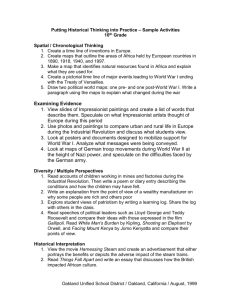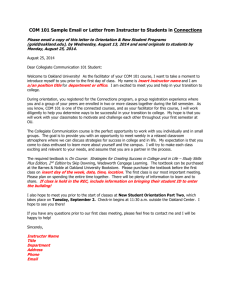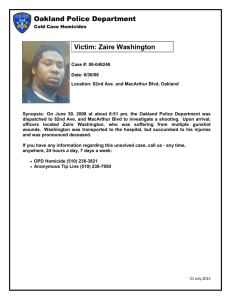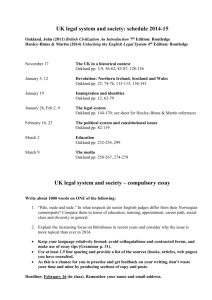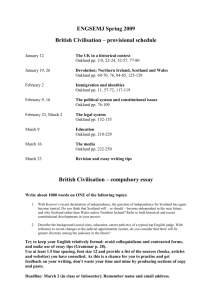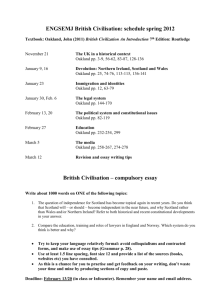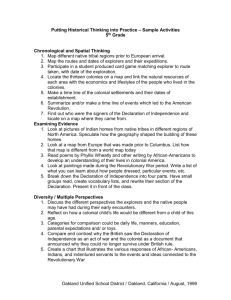Sample Activities - Oakland Unified School District
advertisement
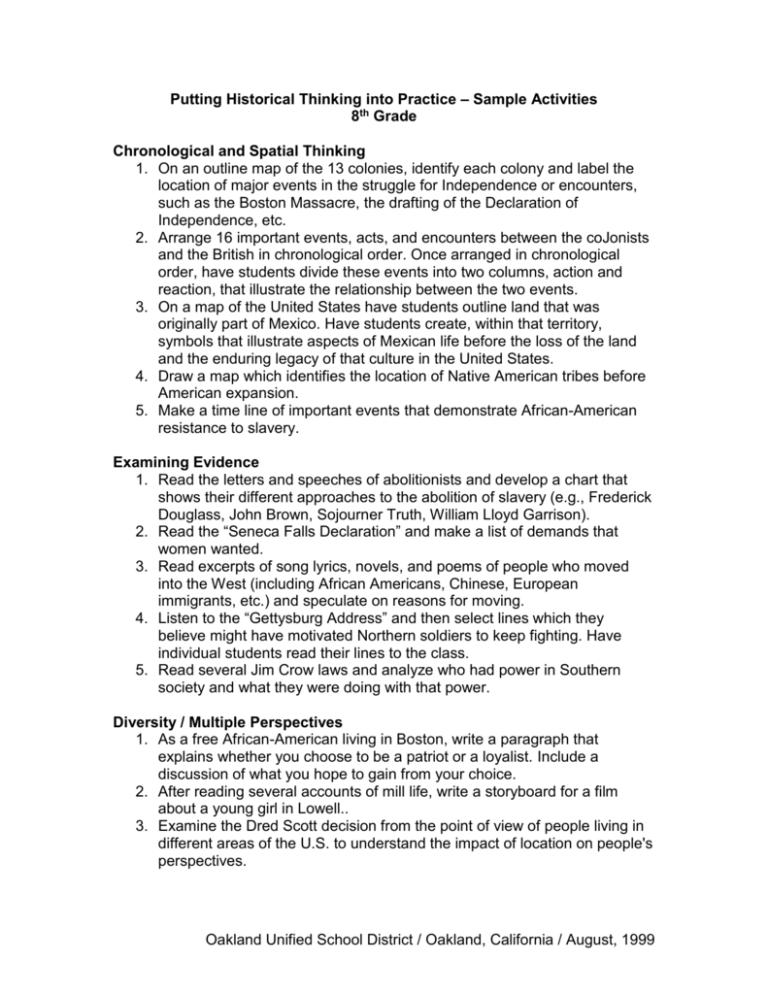
Putting Historical Thinking into Practice – Sample Activities 8th Grade Chronological and Spatial Thinking 1. On an outline map of the 13 colonies, identify each colony and label the location of major events in the struggle for Independence or encounters, such as the Boston Massacre, the drafting of the Declaration of Independence, etc. 2. Arrange 16 important events, acts, and encounters between the coJonists and the British in chronological order. Once arranged in chronological order, have students divide these events into two columns, action and reaction, that illustrate the relationship between the two events. 3. On a map of the United States have students outline land that was originally part of Mexico. Have students create, within that territory, symbols that illustrate aspects of Mexican life before the loss of the land and the enduring legacy of that culture in the United States. 4. Draw a map which identifies the location of Native American tribes before American expansion. 5. Make a time line of important events that demonstrate African-American resistance to slavery. Examining Evidence 1. Read the letters and speeches of abolitionists and develop a chart that shows their different approaches to the abolition of slavery (e.g., Frederick Douglass, John Brown, Sojourner Truth, William Lloyd Garrison). 2. Read the “Seneca Falls Declaration” and make a list of demands that women wanted. 3. Read excerpts of song lyrics, novels, and poems of people who moved into the West (including African Americans, Chinese, European immigrants, etc.) and speculate on reasons for moving. 4. Listen to the “Gettysburg Address” and then select lines which they believe might have motivated Northern soldiers to keep fighting. Have individual students read their lines to the class. 5. Read several Jim Crow laws and analyze who had power in Southern society and what they were doing with that power. Diversity / Multiple Perspectives 1. As a free African-American living in Boston, write a paragraph that explains whether you choose to be a patriot or a loyalist. Include a discussion of what you hope to gain from your choice. 2. After reading several accounts of mill life, write a storyboard for a film about a young girl in Lowell.. 3. Examine the Dred Scott decision from the point of view of people living in different areas of the U.S. to understand the impact of location on people's perspectives. Oakland Unified School District / Oakland, California / August, 1999 4. Using the letters, diaries, and narratives of women from a variety of backgrounds and regions during the Civil War, have students respond to the question, "Did women support their sons', husbands', and brothers' decisions to go to war?" 5. Write an account of Westward expansion from the point of view of a Sioux Indian. 6. Write accounts of Westward Expansion and Manifest Destiny from the perspectives of a Sioux Indian, A Mexican citizen living in Texas and a “Californio’ living in California. Interpretation 1. Compare two historians' interpretations of why the colonists rebelled against Great Britain and using information taken from the text, decide which interpretation is most accurate. 2. View the portions of Glory and Gone With the Wind that deal with why soldiers went to war, making sure that students recognize that these are two different accounts of the same question. Have students select, or create, a soldier (from any background or region) and then write a scene for a movie in which that soldier explains to his mother or wife why he is going to war. 3. Read the chapters on Reconstruction from American Nation and The African American Experience and compare the two interpretations of this time period. 4. Compare accounts of the Battle of the Alamo and its results from the point of view of a Mexican citizen living in Texas and an American citizen living in Texas. Determining Historical/ Geographical Significance 1. Identify three core ideas from the introduction to the Declaration of Independence-equality, consent of the governed, and a right to rebellion. Write a paragraph that applies these ideas to a hypothetical situation. For example, how could they be applied to the governance of a middle school? 2. Write a paragraph which discusses and explains whether they, if they were alive in 1861, would have been willing to fight and die in the Civil War. 3. Watch segments from “Glory.” Have students speculate as to why the person who made Glory chose to tell that story, and not the story of white soldiers. 4. Write an essay stating which amendment-the l3th, l4th, or l5th, has had the greatest impact on America. Oakland Unified School District / Oakland, California / August, 1999
